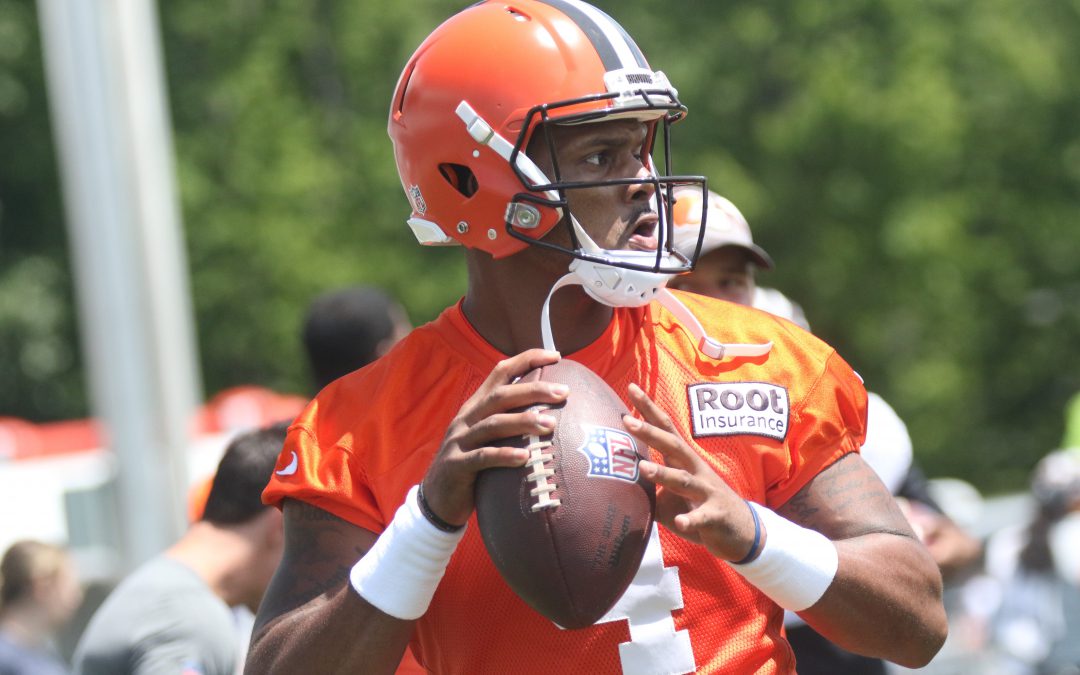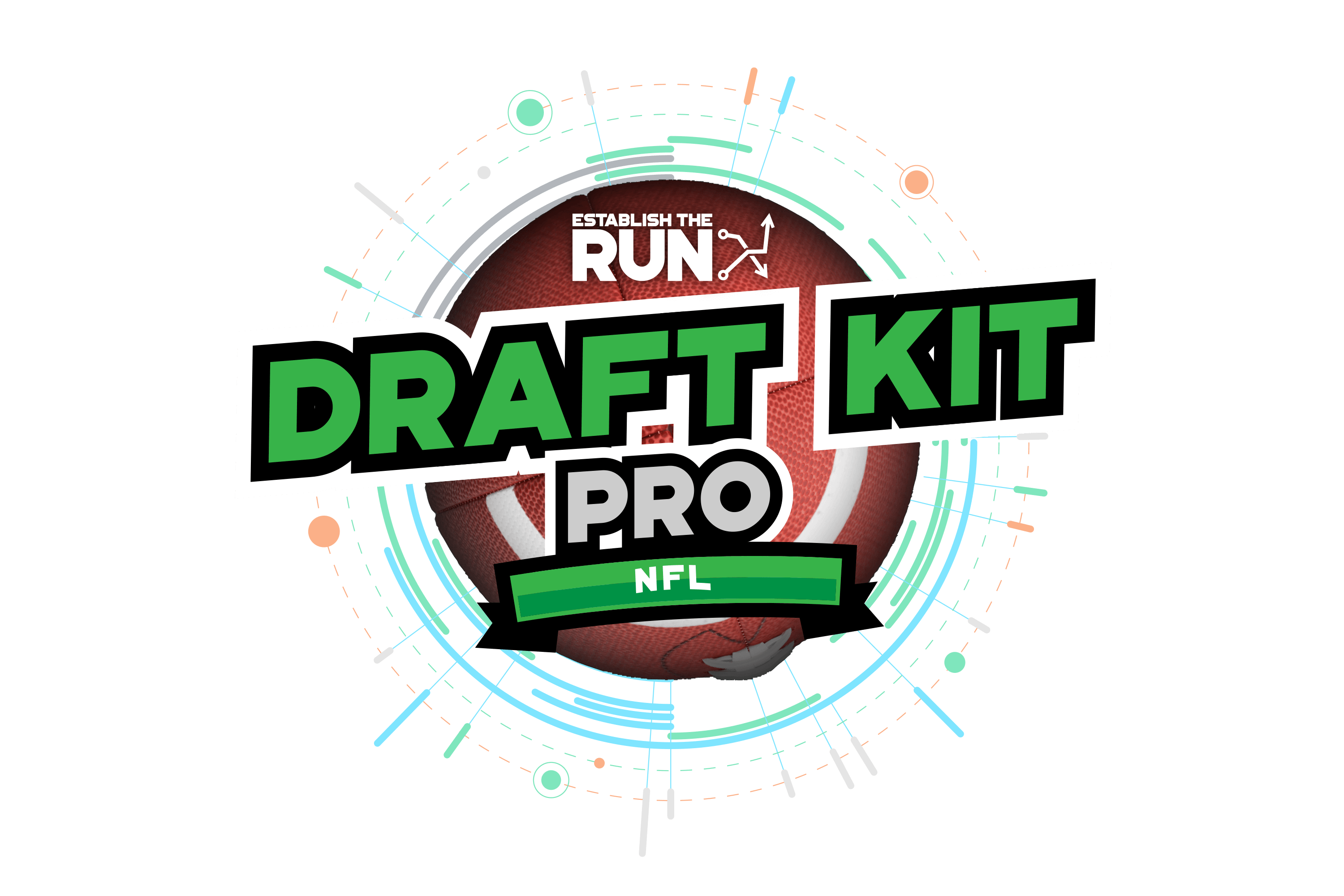Judge Sue L. Robinson has made her decision: Deshaun Watson will be suspended for the first six games of the 2022 season. The NFL can still appeal the decision — the NFLPA has already said they will not — so this saga isn’t completely over. The league was reportedly pushing for at least a full-year suspension, so Goodell may still opt to lay the hammer on Cleveland’s new quarterback. Still, it’s nice to finally have at least some clarity on Watson’s outlook after months of speculation and conflicting reports.
In four professional seasons, Watson has never finished lower than QB7 on a per-game basis. Once available, he’s likely to immediately resume putting up monstrous fantasy numbers, even after a year away from the game. Debates about his value will dominate the fantasy content streets for the next few weeks as his ADP settles. Most of those discussions will paint Watson’s value with a broad brush, failing to account for league-specific factors that affect where he should be drafted. Today, we’ll examine how your league settings impact Watson’s value. Let’s get right to it.
BEST BALL VS. REDRAFT
Watson’s value doesn’t change dramatically in best ball vs. redraft. You could make the argument that he is more valuable in best ball for two reasons:
- In redraft, you have to keep him on your bench for six games, which is another player you can’t drop for a waiver wire pickup. Your league-mates have a liquidity edge in that regard because they won’t have a bench spot locked up for the first month and a half of the season.
- The opportunity cost in best ball is lower because a player going in Watson’s range (this obviously will vary depending on where his ADP settles) is a low-probability shot, whereas Watson will likely be a strong QB1 once he’s available. In redraft, you’d be able to drop that low-probability dart if he doesn’t hit, but in best ball you are stuck with a non-contributor. Because of that, Watson’s top-10 QB floor becomes more appealing.
A best ball team with Watson would theoretically benefit the most from his return if their other QBs are bad because of the points over replacement he will provide once he’s back. However, a 3-QB team with Watson plus two late-round QBs would likely hemorrhage points at the position for the first six weeks, especially given the growing gap between high-end QB1s and the rest of the field. On the other hand, a team with Josh Allen (Week 8 bye) and Watson would be fine for the first six games but wouldn’t benefit that much once Watson gets back.
In redraft, a team with Watson plus a late-round QB isn’t as bad because you can stream for the first six weeks and still start a top-12 QB every week (in most leagues). That’s one point in favor of him being more valuable in redraft.
On the whole, Watson’s value doesn’t change drastically in best ball vs. redraft. You can make the argument in either direction and it’s difficult to say which points hold more weight. Regardless of format, teams with Watson will have to be thoughtful in how they construct their roster to maximize his impact once available and minimize how many points they’re losing while he’s out.
LARGE-FIELD TOURNAMENT VS. CASH
Watson’s value is correlated with how heavily your league weighs the end of the season and how many teams qualify for the postseason. In a best ball cash league where every week counts the same, Watson becomes a much tougher sell knowing you have to take a zero for the first six games. Most (all?) best ball platforms use the same ADP for tournaments and normal cash leagues, but we can’t apply a one-size-fits-all philosophy to Watson’s fantasy stock.
In a tournament like Best Ball Mania III, where Weeks 15-17 hold outsized importance relative to the fantasy regular season, Watson becomes more appealing. While his Advance Rate will likely be below average since he’s not playing the first six games of the year, he’ll be available (and probably will have kicked the rust off) by the tournament weeks. It’s also worth mentioning that he’s an interesting play from a uniqueness perspective. Rosters with Watson will likely advance at a subpar clip, so any Watson team that does advance has massive leverage over the field.
On the contrary, Watson must be massively devalued in contests like Drafters’ NFL Best Ball Championship because it’s a 55,008-team competition with no tournament structure (i.e. the overall highest-scoring team from Weeks 1-17 takes home the grand prize).
The number of teams that make the playoffs is also a factor. In many home leagues, 6-of-12 teams make the playoffs. Watson is pretty palatable in those leagues knowing that you only need an average team in the regular season to qualify for the postseason. If your home league has a 16-week regular season and then only two teams make the championship in Week 17, he loses some value because you have to be really good in Weeks 1-16 to have a shot at the title. For best ball players, Watson’s value in a tournament like the Pomeranian (if Underdog opens another one) would be higher than it is in BBM3 because 4-of-12 teams advanced out of the group stage in that one rather than the standard 2-of-12.
One more thing: BBM3 (along with many other tournaments) opened in May, and the Watson discourse early in the summer hinted at a more severe suspension. His Underdog ADP bottomed out below 200 during the first two weeks of July. In large-field tournaments like this, it’s an ongoing argument among fantasy analysts whether it’s worth drafting players whose ADP rises sharply because so many teams got those players at way cheaper prices. Watson in particular is an interesting case because his ADP has been near its minimum during the highest-volume time for drafting so far. His ADP in May and part of June was actually in the early triple-digits, but not many people were drafting then.
With that being said, BBM3 is still not even 45% full. The majority of teams haven’t been created yet and, as such, they will draft when Watson is no longer going at a discount. Plus, it was only a two-week stretch when his ADP fell below 200. Personally, I will not be avoiding Watson simply because other teams got him at a cheaper price, but I wanted to bring it up because it’s not an exact science and there could be differing opinions.
1-QB VS. SUPERFLEX/2-QB
In most 1-QB leagues, we recommend only taking one quarterback. Either you are paying up for an every-week starter and don’t need a backup, or you get stuck with a low-end QB1 and play the streaming game every week. If your quarterback gets hurt or underperforms, you can simply pick up another one on the waiver wire because most NFL starting QBs won’t be drafted.
In Superflex or 2-QB leagues, the quarterback position becomes immensely valuable to the point that they dominate the early rounds of fantasy drafts. Because of that, you ideally want to end up with three starters.
With that in mind, Watson is theoretically more valuable in SF/2-QB because you want three QBs anyway, so you’re not spending an additional roster spot on a QB to get him. Furthermore, the heightened value of QBs increases the payout if Watson ends up returning to elite QB1 form. The risk is also higher, but we are generally looking to boost our chances of a high-end outcome since we are aiming to finish first in our leagues. In other words, there’s no difference between finishing just out of the money and finishing last, so increasing the probability of a tail outcome is a good thing.
However, we don’t want to go overboard with this. Taking Watson in SF/2-QB probably means you have to spend up for your QB3, so there is a hidden cost to drafting him. Watson does not skyrocket into an earlier QB tier in 2-QB leagues just because you have to start another quarterback, but he should see a small value bump in theory. Like the best ball vs. redraft section, Watson’s value doesn’t change that much in 1-QB vs. SF/2-QB, and teams in both formats need to be extra cognizant of roster construction if they draft him.
SHORT BENCHES VS. DEEP BENCHES
Watson is more valuable in leagues with deep benches because the opportunity cost of having him on your roster is lower. In best ball, deeper benches (i.e. in 20-round drafts like on DraftKings) allow you to draft three QBs to cover for Watson’s suspension without worrying about being too weak at a different position. On Underdog, it’s more of a sacrifice to take a third quarterback.
The same logic applies in redraft, plus you have to hold Watson on your bench for six weeks, which means you’ll have to drop someone else to pick up a player off the waiver wire. If your league has short benches, whichever player you drop probably holds legitimate value. In leagues with deep benches, you’re not giving up as much by stashing Watson on your bench because you likely have a bunch of low-probability dart throws you can drop without a second thought.



